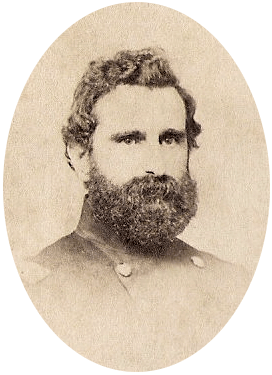Hector Tyndale facts for kids
Quick facts for kids
Hector Tyndale
|
|
|---|---|
 |
|
| Born | March 24, 1821 Philadelphia, Pennsylvania |
| Died | March 19, 1880 (aged 58) Philadelphia, Pennsylvania |
| Buried |
Laurel Hill Cemetery, Philadelphia, Pennsylvania
|
| Allegiance | United States of America Union |
| Service/ |
United States Army Union Army |
| Years of service | 1861–1864 |
| Rank | |
| Unit | XII Corps |
| Commands held | 28th Pennsylvania Volunteer Infantry |
| Battles/wars | American Civil War |
| Other work | Glass and Ceramics Importer |
Hector Tyndale (also known as George Hector Tyndale) was an important general for the Union Army during the American Civil War. He reached the rank of Brevet Major General, which is an honorary higher rank. He was known for leading his troops bravely in major battles like the Battle of Antietam and the Battle of Wauhatchie. Besides his military career, Tyndale was also an expert in fine pottery and porcelain.
Contents
Hector Tyndale's Life Story
Early Years and Family Business
Hector Tyndale was born in Philadelphia, Pennsylvania. His father was a successful businessman who imported beautiful china and glassware. Hector followed in his father's footsteps, working in the family business with his brother-in-law. He traveled to Europe many times to visit factories and learn about how pottery and porcelain were made. This made him an expert, and he built one of the best collections of these items in the country.
His brother, Sharon Tyndale, became the Secretary of State for Illinois.
Getting Involved in Politics
Around 1856, Tyndale became active in Republican politics in Philadelphia. Even though he was a Republican, he didn't support John Brown, an abolitionist who tried to start a slave revolt. However, after John Brown was executed, Tyndale agreed to help Brown's widow. He escorted her to see her husband one last time and to get his body back. People worried Mrs. Brown might be in danger, so Tyndale made sure John Brown's body was correctly identified before taking it for her.
Serving in the Civil War
When the Civil War began, Hector Tyndale was on a trip in Europe. He quickly returned home and joined the Union Army. On June 28, 1861, he became a major in the 28th Pennsylvania Volunteer Infantry. His unit was first sent to guard Harpers Ferry.
Key Battles and Promotions
Tyndale was promoted to lieutenant colonel on April 25, 1862. He fought in the Second Battle of Bull Run. On September 17, 1862, during the Battle of Antietam, he was the highest-ranking officer in his brigade. So, he took command of the 1st Brigade, 2nd Division, XII Corps. Tyndale led his brigade in a fierce attack near the Dunker Church. He was wounded twice, first in the hip and then in the head, but he kept leading until he had to leave the field to recover.
While he was recovering, Tyndale was promoted two ranks to brigadier general. This promotion, effective November 29, 1862, was a reward for his brave actions at Antietam.
Return to Command
Tyndale returned to lead his brigade in July 1863, after the Battle of Gettysburg. Later that year, his brigade was sent with other troops to help the Union Army in Chattanooga. Tyndale led his brigade in the Battle of Wauhatchie, where they made a successful bayonet charge. He also played a small part in the Battle of Chattanooga. On August 26, 1864, Tyndale left the army because of poor health. He was later given the honorary rank of major general on March 13, 1865.
Command History
- 1st Brigade, 2nd Division, XII Corps (September 17, 1862)
- 1st Brigade, 3rd Division, XI Corps (July 13 – September 19, 1863)
- 1st Brigade, 3rd Division, XI Corps (October 12, 1863 – February 15, 1865)
- 3rd Division, XI Corps (February 15 – April 16, 1864)
- 3rd Brigade, 1st Division, XX Corps (April 16 – May 3, 1864)
Life After the War
After his time in the army, Tyndale went back to his business in Philadelphia. He tried to become mayor of Philadelphia in 1868 but was not successful.
A relative of his, Professor John Tyndall from England, gave lectures in the U.S. He used the money from these lectures to create a fund to support science education. General Tyndale was chosen as one of the people to manage this fund. Eventually, the fund became a scholarship, and at the University of Pennsylvania, it was known as the Hector Tyndale scholarship for physics. In 1869, he became a member of the American Philosophical Society.
In 1876, because of his knowledge of porcelain, Tyndale was chosen as one of the judges for the Centennial Exhibition. This was a big event celebrating 100 years of American independence.
General Tyndale passed away in Philadelphia in 1880. He is buried at Laurel Hill Cemetery.

